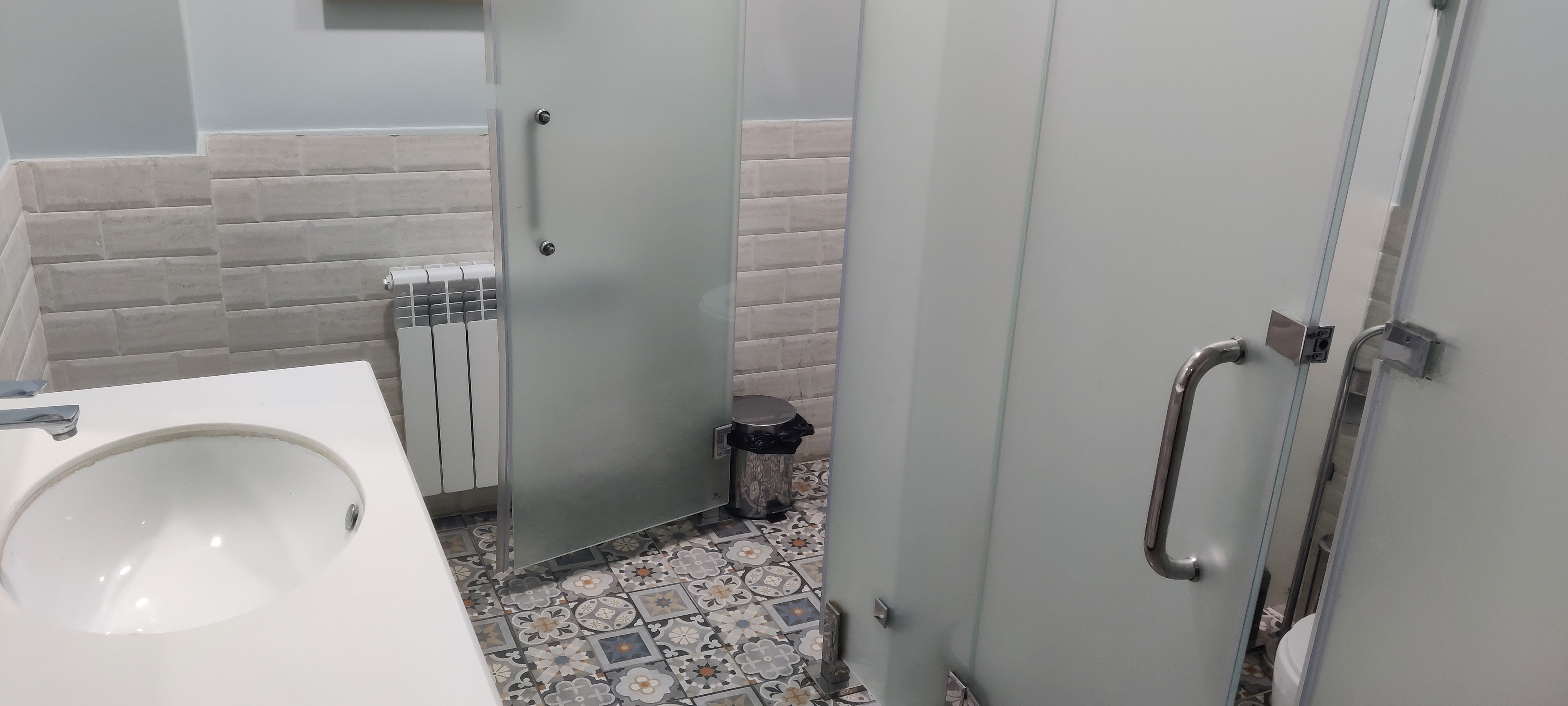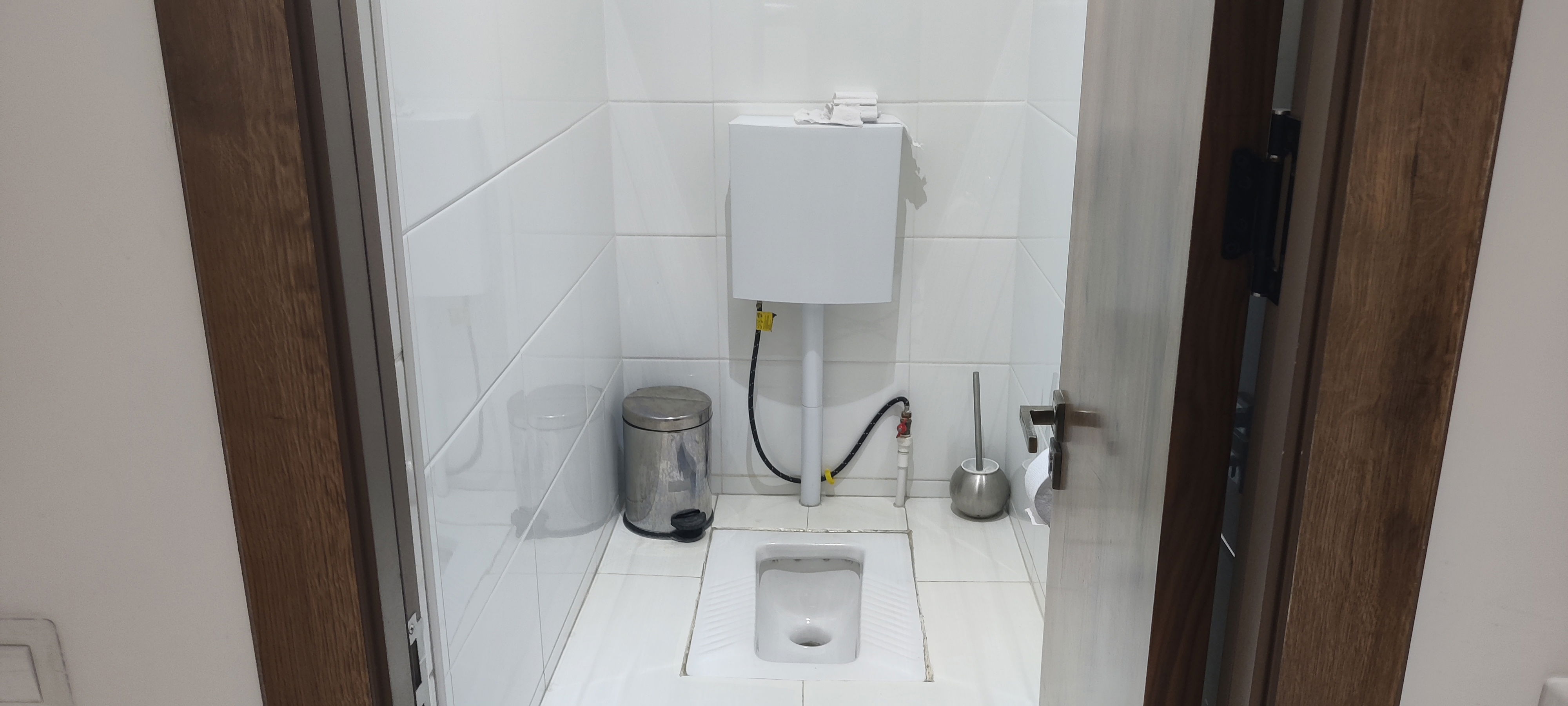Hit the Head!
Toilet miracles!
Yes, we all use them ... 'hit the head,' 'use the john,' 'go to the powder room,' ‘see a man about a horse,’ or whatever euphemism you favour, but very few people like to talk about it. Those that do are considered weird, and we avoid their company and warn our children not to visit their houses. But how we actually use them depends, to a large degree, on where we were born.
Having lived in a couple of predominantly Muslim countries, I’ve accumulated a good collection of related questions. These have, so far, been only partly answered because I never found the right person to ask. For example, what is the proper toilet etiquette when using a Turkish style 2-footprints-and-a-hole toilet? Should one be facing the wall, or facing the door? There’s no tell-tale shape of the bowl to help the slow ones amongst us. If you face the wall, then you have to back up when leaving, which seems very undignified. If you want to face the door, you need to do some heavy maneuvering in a confined space with a gaping hole right by your feet. What is one to do?
Not all Turkish toilets are created equal, either. Our favorite restaurant in town has an option for their discerning customers. Two toilets of the Western design, one Turkish. All three of them use tiles of beautiful design and colours, which makes even squatting a wonderful and exotic experience – never mind which direction you choose.
Sometimes, living in town it’s all too easy to forget that Uzbekistan is a poor and developing country. Luckily, our school is obliged by the Ministry of Education to provide regular Pedagogical Development sessions to rural schools. And who is better qualified than our small cohort of International teachers? And that’s how, on one sunny morning in October, I found myself waiting for a car, provided by the Ministry, that would take me and my colleague to a school supposedly not too far from Nukus. “It’s only 80 km. You will be done in no time,” our VP told us. What he forgot to mention was the state of Uzbek roads. The trip took us the better part of two hours before we pulled up in front of a small building in the middle of nowhere. I was ready to embrace the toilet experience.
Several other cars and a mini-bus pulled in at the same time, bringing local teachers from other schools eager to hear some of the strategies and techniques we use at our privileged well-funded school, and to have a day off their regular school week. I am not sure which one was the bigger attraction. A win-win situation. I had a captive audience, I thought.
We entered the very humble looking building and were offered sanitizer spray for our hands by some youngsters assigned to this duty. After that, I was introduced to my translator, who would render my words of wisdom in Uzbek. After the introduction was made, I asked the burning question, “Please, where are the toilets?” She smiled and told me to follow her. The building was small, so I could not envision why she just didn’t point to any of the several doors in the only hall there. I was still naïve then. She headed back outside. This did not bode well for me, I thought, as she started off in the same direction several of the other obviously initiated women were headed. We followed a dirt track for about 100 m, which took us to the front of a small building. We stopped, and my translator greeted the women already clustered there.
After a while, a woman emerged from the building, which was obviously the toilet, and my translator pointed to my handbag. ‘You can leave it with me.’ I noticed that the woman who just vacated the building accepted a handbag from one of the women in the cluster who apparently held it in safe-keeping while she was using the toilet. I found this sense of collegiality rather endearing and I handed her my bag without hesitation. It was also the first sign that this was not going to be the ‘business as usual’ experience. After all, you can’t pry a Western woman headed to the washroom from her handbag even if you tried and here the women were voluntarily just handing away their bags.
Pretending that I had done this many times before and found nothing strange about the situation, I started confidently walking towards the small building the woman left. The first thing I noticed after I entered were the tops of four heads, because the partitions between the individual stalls were intended for midgets. The stalls had no doors so the woman using the furthest stall and then leaving the room could see more than just heads as she passed all the other stalls on her way out. The proper etiquette would be to avert your eyes, but I was caught unprepared. My guess would be that this school has no issues with students chilling in the washroom way past the school bell as is all too common in Western schools.
My translator seemed like a down to earth woman, so I asked her one of those pressing questions.
“So, isn’t it rather difficult for older people to squat?” I tried to picture many North Americans of certain ages and physical conditions doing that, but I failed. She looked at me as if deciding whether I was worthy of an honest answer.
“No, they are used to it. It’s not a problem.”
Is it really possible that they maintain their ‘squat muscles’ even at a really ripe old age? I wondered silently, but I let it go.
My next question was whether people use their outhouses at night.
“Yes, of course”, was the answer.
“Even in wintertime?” was my incredulous qualifier.
“Yes, they do,” she insisted.
I still think that my companion was just trying to portray her people as these incredibly hardy and undaunted by elements sorts. What’s wrong with chamber pots? I felt like countering and defending Western laziness. But I resisted. If she wants me to believe that they trot to their outhouses at 3 am when it’s -15oC, who am I to question that.
When we arrived in Uzbekistan, my first impression of Tashkent had been shaped by the airport toilet. After a long flight into the country and after an even longer time clearing Customs and Immigration, I was very ready to enjoy a toilet without being at the mercy of turbulence. But I was taken a bit aback when I entered the room marked WC. The room was divided into several stalls by bubble glass walls. Seriously!? Walls made of thick glass with bubbles in it. No, you couldn’t see the color of underwear of the person using the stall next to yours, but their presence was definitely felt in the form of their shape which seemed like it was next to you. The doors were made of the same bubble glass material. I couldn’t figure out why any designer would choose this type of material.

The answer came to me in Samarkand. We were in a nice café when the place lost power. I just happened to be in a washroom at the time. Have you ever tried to find your way in the middle of the night in an unfamiliar hotel room? That’s how I felt using a sliver of light coming from the restaurant interior through an open door of the main toilet room. Only the bubble glass walls allowing that guiding bit of light saved me and the shreds of my dignity.

For several weeks after that trip, I would gaze lovingly into the toilet bowl every time I flushed, admiring the swirling water, thanking my lucky fortune it’s all at my disposal.